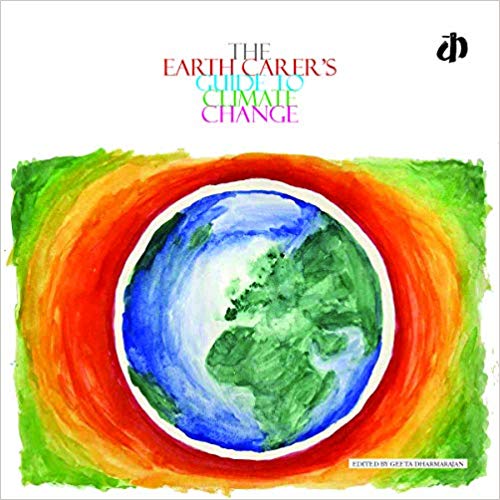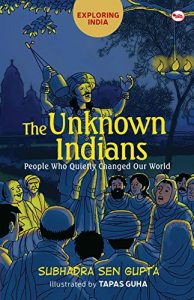Today, more than ever before it is necessary to create awareness about the reality of climate change. The signs of our abuse of the earth are showing clearly now. The wounds are bare for all to see. It is more important than ever to teach children about climate change. That is why perhaps, a guide to climate change, or rather to teaching children about climate change is called for. As we all know, children represent hope. Perhaps the way to change things for the better is to create awareness within children.
As the name suggests, The Earth Carer’s Guide to Climate Change, published by Katha, talks about the pressing issue of Climate Change and how it impacts our future.
Teaching children about Climate Change need not be a daunting task, as many of us would assume. This book presents a curated selection of poems, stories and short information snippets, with enchanting and beautiful artwork, to bring forth the theme.

The text evokes wondrous images of the natural wonders that we are lucky to experience. But then, it gently introduces the concept of climate change and the dangers that this phenomenon brings for us.
Climate Change is a problem that belongs jointly to the whole world. It will not just impact one country or group. Keeping this broad aspect in mind, the book has pieces from varied places. Thus, a translation of a Gujarati poem sits alongside an old folk tale from Japan for instance.
Interspersed gently across the book are questions that encourage children to think about climate change and what they can do about it. How can they find their voice, and more importantly how can they express it?
Besides several well illustrated and simply explained facts about climate change, the book has clear and direct call to actions. These are simple suggestions about how a small child can make a difference at an individual level.
The book is also available in Hindi-Jalvayu Parivartan Se Prabhavit Dharti Hitrakshak Sandarshika

The Earth Carer’s Guide to Climate Change will resonate with children as young as 5 right up to 10-12-year-old children. It is a useful resource for parents and teachers to broach the subject of climate change in a humanistic manner!




